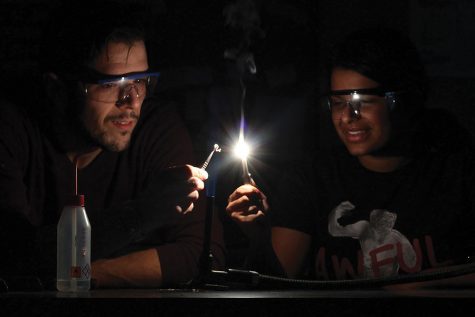Illinois House races mirror national conversations
Third District: Conservative Democrat vs. Nazi
The Third District is on the southwest side of Chicago and includes portions of Bridgeport, Beverly and Armour Square. It is a majority working class based district with a population that is one-third Hispanic. In 2016, Hillary Clinton won this district by 15.4 points.
Democratic Candidate: Rep. Daniel Lipinski
Lipinski has been the representative of this district for the last seven terms and received 51 percent of the Democratic primary vote. He is among the most conservative Democrats in Congress. He is a member of the House Committee on Science, Space and Technology and the Committee on Transportation and Infrastructure.
Republican Candidate: Arthur Jones
Arthur Jones previously unsuccessfully sought nomination five times but won in an unopposed Republican primary. Jones has ties to white supremacist and Nazi groups, and has been denounced by the Illinois Republican Party. He supports bringing home troops from defending the borders of foreign nations. He does not believe in amnesty for undocumented immigrants.
Fourth District: Chuy looks to national stage
The Fourth District is 33 percent more Democratic than the average U.S. district, making it the nineteenth most Democratic district nationwide. It is 72 percent Hispanic and is completely urban, including parts of Lincoln Park, Irving Park and Logan Square. This district has been represented by Luis Gutierrez since 1993, but Gutierrez will retire at the end of his current term. Hillary Clinton won the district by 68.3 points in 2016.
Democratic Candidate: Jesus “Chuy” Garcia
Cook County Commissioner Jesus “Chuy” Garcia is running as the Democratic candidate and won 66% of the primary vote. Garcia says that if elected, he will focus on immigration reform and resolving the status of DACA immigrants. Garcia forced Rahm Emanuel to a runoff in the 2015 Chicago mayoral race, but lost.
Republican Candidate: Mark Wayne Lorch
Lorch is currently a financial analyst and ran unopposed for the Republican candidacy. He supports giving undocumented immigrants a path to citizenship, but does not support the Affordable Care Act.
Sixth District: Illinois’ most flippable district
The sixth district contains suburbs north and west of Chicago, which are mainly affluent communities. Although the incumbent, Rep. Peter Roskam, is a Republican and won by 20 points in 2016, Donald Trump lost the district by seven points.
Democratic Candidate: Sean Casten
Casten won 30 percent of the Democratic vote in the primary, but has never held political office. He previously worked as an energy executive, so he says he understands the importance of creating clean energy jobs for the economy and environment. He also says Trump threatens science, women’s rights, affordable healthcare, Social Security and Medicare.
Republican Candidate: Rep. Peter Roskam
Peter Roskam has held his position since 2007. In his prior terms, he repealed Obama’s health care law and received criticism for canceling public forums. He highlights his involvement in the December 2017 tax bill. Roskam supports stronger refugee screening processes and for limiting access to abortion, and disapproval for the Iran nuclear deal.
Thirteenth District: Obamacare takes center stage
The 13th district contains parts of Champaign, Urbana, Bloomington and Springfield. While its current representative is Republican Rodney Davis, Hillary Clinton won this district by 5.3 points in 2016. The 13th district is one of the districts the Democratic Congressional Campaign Committee targeted as a flippable district in as early as January 2017.
Democratic Candidate: Betsy Londrigan
Betsy Londrigan won 46 percent of the primary vote and has primarily campaigned on protection of healthcare and Obamacare to protect those with pre-existing conditions. She particularly criticises Rodney Davis, her opponent, for his vote to repeal Obamacare.
Republican Candidate: Rep. Rodney Davis
Rodney Davis has held his seat for three terms. His past legislative record has included increasing job access training programs, reducing Obama-era regulations, joining fellow Republicans in passing tax reform in 2017 and expanding cancer research.



























































